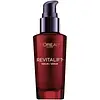What's inside
What's inside
 Key Ingredients
Key Ingredients

 Benefits
Benefits

 Concerns
Concerns

 Ingredients Side-by-side
Ingredients Side-by-side

Camellia Japonica Flower Water
Skin ConditioningPropanediol
SolventGlycerin
HumectantWater
Skin ConditioningPentylene Glycol
Skin ConditioningSodium Citrate
BufferingSodium Polyacrylate
AbsorbentFaex
Skin ConditioningCoffea Arabica Seed Oil
MaskingCamellia Japonica Flower Extract
EmollientParfum
MaskingChlorphenesin
AntimicrobialCitric Acid
BufferingEthylhexyl Palmitate
EmollientCaprylyl Glycol
EmollientXanthan Gum
EmulsifyingSodium Hyaluronate
HumectantChondrus Crispus Powder
AbrasiveAdenosine
Skin ConditioningLactic Acid
BufferingSaccharide Isomerate
Humectant1,2-Hexanediol
Skin ConditioningPalmitoyl Tetrapeptide-7
Skin ConditioningCamellia Japonica Flower Water, Propanediol, Glycerin, Water, Pentylene Glycol, Sodium Citrate, Sodium Polyacrylate, Faex, Coffea Arabica Seed Oil, Camellia Japonica Flower Extract, Parfum, Chlorphenesin, Citric Acid, Ethylhexyl Palmitate, Caprylyl Glycol, Xanthan Gum, Sodium Hyaluronate, Chondrus Crispus Powder, Adenosine, Lactic Acid, Saccharide Isomerate, 1,2-Hexanediol, Palmitoyl Tetrapeptide-7
Water
Skin ConditioningDipropylene Glycol
HumectantDimethicone
EmollientGlycerin
HumectantHydroxypropyl Tetrahydropyrantriol
Skin ConditioningPropylene Glycol
HumectantC12-15 Alkyl Benzoate
AntimicrobialAlcohol Denat.
AntimicrobialDimethicone/Vinyl Dimethicone Crosspolymer
Skin ConditioningPEG-100 Stearate
Stearic Acid
CleansingPotassium Cetyl Phosphate
EmulsifyingPotassium Hydroxide
BufferingCarbomer
Emulsion StabilisingGlyceryl Stearate
EmollientSilica
AbrasiveOleamide
2-Oleamido-1,3-Octadecanediol
Skin ConditioningPalmitic Acid
EmollientDisodium EDTA
Hydrolyzed Hyaluronic Acid
HumectantHydroxyethylcellulose
Emulsion StabilisingCapryloyl Salicylic Acid
ExfoliatingXanthan Gum
EmulsifyingCetyl Alcohol
EmollientOctyldodecanol
EmollientTocopheryl Acetate
AntioxidantPhenoxyethanol
PreservativeCI 15985
Cosmetic ColorantCI 19140
Cosmetic ColorantCI 77891
Cosmetic ColorantMica
Cosmetic ColorantLinalool
PerfumingLimonene
PerfumingCitronellol
PerfumingBenzyl Alcohol
PerfumingParfum
MaskingWater, Dipropylene Glycol, Dimethicone, Glycerin, Hydroxypropyl Tetrahydropyrantriol, Propylene Glycol, C12-15 Alkyl Benzoate, Alcohol Denat., Dimethicone/Vinyl Dimethicone Crosspolymer, PEG-100 Stearate, Stearic Acid, Potassium Cetyl Phosphate, Potassium Hydroxide, Carbomer, Glyceryl Stearate, Silica, Oleamide, 2-Oleamido-1,3-Octadecanediol, Palmitic Acid, Disodium EDTA, Hydrolyzed Hyaluronic Acid, Hydroxyethylcellulose, Capryloyl Salicylic Acid, Xanthan Gum, Cetyl Alcohol, Octyldodecanol, Tocopheryl Acetate, Phenoxyethanol, CI 15985, CI 19140, CI 77891, Mica, Linalool, Limonene, Citronellol, Benzyl Alcohol, Parfum
 Reviews
Reviews

Ingredients Explained
These ingredients are found in both products.
Ingredients higher up in an ingredient list are typically present in a larger amount.
Glycerin is already naturally found in your skin. It helps moisturize and protect your skin.
A study from 2016 found glycerin to be more effective as a humectant than AHAs and hyaluronic acid.
As a humectant, it helps the skin stay hydrated by pulling moisture to your skin. The low molecular weight of glycerin allows it to pull moisture into the deeper layers of your skin.
Hydrated skin improves your skin barrier; Your skin barrier helps protect against irritants and bacteria.
Glycerin has also been found to have antimicrobial and antiviral properties. Due to these properties, glycerin is often used in wound and burn treatments.
In cosmetics, glycerin is usually derived from plants such as soybean or palm. However, it can also be sourced from animals, such as tallow or animal fat.
This ingredient is organic, colorless, odorless, and non-toxic.
Glycerin is the name for this ingredient in American English. British English uses Glycerol/Glycerine.
Learn more about GlycerinParfum is a catch-all term for an ingredient or more that is used to give a scent to products.
Also called "fragrance", this ingredient can be a blend of hundreds of chemicals or plant oils. This means every product with "fragrance" or "parfum" in the ingredients list is a different mixture.
For instance, Habanolide is a proprietary trade name for a specific aroma chemical. When used as a fragrance ingredient in cosmetics, most aroma chemicals fall under the broad labeling category of “FRAGRANCE” or “PARFUM” according to EU and US regulations.
The term 'parfum' or 'fragrance' is not regulated in many countries. In many cases, it is up to the brand to define this term.
For instance, many brands choose to label themselves as "fragrance-free" because they are not using synthetic fragrances. However, their products may still contain ingredients such as essential oils that are considered a fragrance by INCI standards.
One example is Calendula flower extract. Calendula is an essential oil that still imparts a scent or 'fragrance'.
Depending on the blend, the ingredients in the mixture can cause allergies and sensitivities on the skin. Some ingredients that are known EU allergens include linalool and citronellol.
Parfum can also be used to mask or cover an unpleasant scent.
The bottom line is: not all fragrances/parfum/ingredients are created equally. If you are worried about fragrances, we recommend taking a closer look at an ingredient. And of course, we always recommend speaking with a professional.
Learn more about ParfumWater. It's the most common cosmetic ingredient of all. You'll usually see it at the top of ingredient lists, meaning that it makes up the largest part of the product.
So why is it so popular? Water most often acts as a solvent - this means that it helps dissolve other ingredients into the formulation.
You'll also recognize water as that liquid we all need to stay alive. If you see this, drink a glass of water. Stay hydrated!
Learn more about WaterXanthan gum is used as a stabilizer and thickener within cosmetic products. It helps give products a sticky, thick feeling - preventing them from being too runny.
On the technical side of things, xanthan gum is a polysaccharide - a combination consisting of multiple sugar molecules bonded together.
Xanthan gum is a pretty common and great ingredient. It is a natural, non-toxic, non-irritating ingredient that is also commonly used in food products.
Learn more about Xanthan Gum